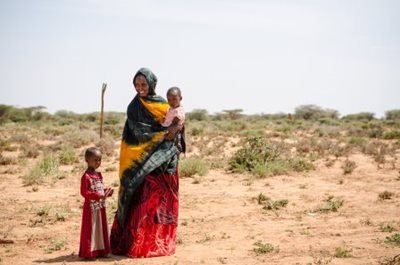Many countries and millions of people are affected
Millions of people in Africa have experienced food insecurity at an unprecedented rate. Around the world, an estimated 76 million people across 45 countries, mainly in Africa, are likely to need emergency food assistance in 2018. To put that in perspective, this figure is 60% higher than it was in 2015. Millions of men, women, and children in Ethiopia, Kenya, Nigeria, Somalia, and South Sudan and the Sahel are in urgent need of humanitarian aid.
 Food insecurity has far-reaching impacts
Food insecurity has far-reaching impacts
Food insecurity doesn't just cause hunger, thirst and death. The impacts of drought are far-reaching and last years. This can include outbreaks of disease, people having to leave their homes and communities in search of a more stable community, interrupted educations, malnutrition, lost livelihoods, and more.
The crisis is ongoing
Disasters like this one are often what we call silent disasters, which means they are occurring without getting a lot of international attention. Although it is hard to say exactly what will happen in 2018, predictions are unanimous in saying it will be difficult and millions of people will be affected. , with unpredictable conditions for 2018 making it hard to say what will happen this year.
It's not only drought causing food insecurity
Conflict in some impacted areas has a direct affect on increased food insecurity. These conflicts can disrupt food systems, damage livelihoods, force people to leave their homes, and make it incredibly difficult for people to be reached with life-saving humanitarian aid. Crops are also being impacted by other factors, like army worms that can cause crop failures.
Disease outbreak is a very real risk
People and communities lose sources of income
Drought and conflict in these regions makes it harder for people to earn a living. Widespread crop failures, loss of livestock, and becoming displaced all damage people's abilities to earn an income. This is one of the ways that droughts leave behind a long-lasting impact.
The Red Cross is responding locally, regionally, nationally and globally
Some examples of how the Red Cross is helping include:
- Providing emergency food rations, water, and emergency supplies,
- Rehabilitating water sources, and providing new sources for clean drinking water,
- Distributing tools to help create and gather more food supplies, like seeds and fishing kits
- Providing health care support, like the Canadian Red Cross’ cholera treatment clinic and care for pregnant women, breast-feeding mothers, babies and, children,
- Veterinary care for livestock,
- Providing livelihood support.
Training can help respond to this, and future disasters
As part of the Capacity Strengthening for Emergency Response in Africa (SERA) program, the Canadian Red Cross, with support from the Government of Canada, helps train local Red Cross societies on ways to respond to current and future disasters.

